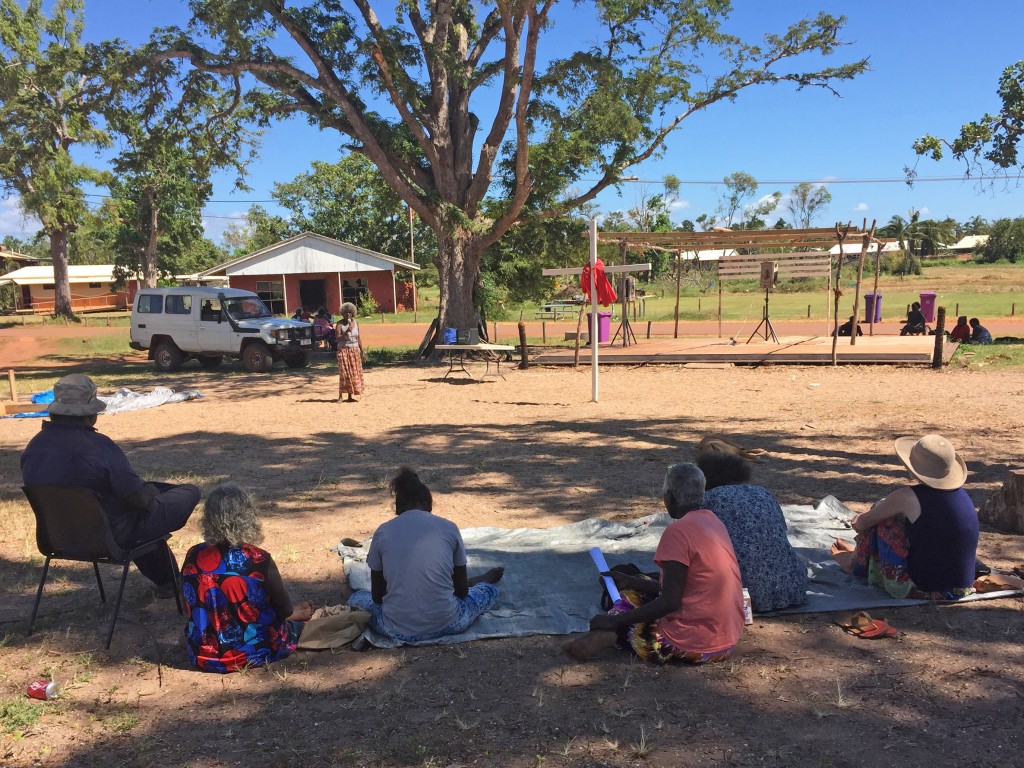Towards the end of our work in Milingimbi, one of the key Yolŋu with whom we had been working (and with whom we had worked with before), decided that the number of issues which had arisen in the course of our work (the role of police, homelands, doing ranger work, health and education, the Yolŋu way, etc) had coalesced to the point of demanding community-wide attention. The way that he dealt with this was to call a community meeting. The term that he used to describe the beginning of the process was wäŋa way’yun, literally the land crying out calling the people to attention. This land-calling was enabled by a community loud-speaker. It seemed that the many small items of daily concern we were addressing – the emergence of a women’s group for example – had developed such critical mass that the place as much as its people was demanding attention. The result was a great deal of community discussion and a large community meeting with the development of a petition to government signed by many residents.
The petition which raised a good number of issues of concern seemed to cause some flurry in Darwin a quick response from Police (a successful community engagement visit), a promised visit from the Chief Minister and a letter from the Federal Minister for Indigenous Affairs. Each issue was addressed separately with a referral to this or that department or individual to deal with the concern, so the response did have the effect of dispersing the collective concern of the place into a range of directions, each of which would need to be explored separately. Wäŋa way’yun was not something that we saw as part of our governance and leadership program, but it clearly was an effect of it. We were asked to support the making of the petition, ie translating what people had said into English and putting it into a letter and helping with learning about petitions as a democratic governance technology. And it helped clarify directions in which further work could proceed.
Download Milingimbi Makarr Garma Petition pdf
